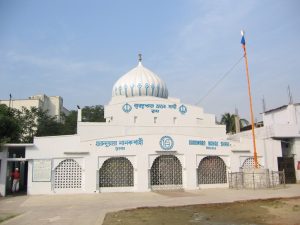Historical Gurdwaras in other Countries
Whenever we start thinking of Sikh organisations, the most important organisation that comes to our mind is a Gurdwara, popularly known as Sikh temple at many places in India and in foreign countries. It is this organisation about which every Sikh and all those persons who know something about Sikhism, are familiar. So far Sikhs are concerned, it has not only been a religious place for them, but, much more for their life and existence. Gurdwaras are so integral with the life of Sikhs that they have become a part of Sikh psyche and cannot be separated from them. Its significance in the life of a Sikh is mainly because of its unique features which distinguish Gurdwaras as religious places of the Sikhs from the religious places of the people of other religions. Sri Guru Granth Sahib is not a holy book, but the Master itself in the form of divine words enshrined therein. The installation of Sri Guru Granth Sahib is the first and the foremost requirement of a Gurdwara. The concept of Sangat, meaning, a congregation assembled to listen and to recite the divine words as contained in the Guru scripture, is another feature of the Gurudwara. It may be clarified that congregation does not mean Sikhs alone, but anybody from any religion, caste, creed, sex, and nationality can become a part of this congregation. That is why there are gates to the Gurdwara on all the four sides implying that anybody is welcome from any side. Then there is a free kitchen known as Langar to feed all the people without any discrimination. The word ‘Langar’ of Sikh religion is one of those words which have been adopted by English Dictionaries and defined therein in context of Sikh religion (Kirpan is another such word). The Sikh flag, known as Nishan Sahib, saffron or blue in colour just outside the central sanctum flies so high that it appears to beacon all the people to the holy place. All these things combined have endeared Gurdwaras so close to the heart of Sikhs that they cannot think of living anywhere without a Gurdwara near or around them. A Sikh learns everything in his life from this place, he has answer to all his questions at this place, and he is prepared to sacrifice even his life to protect the Gurdwara from any kind of harm. The question may arise as how the Gurdwara has attained such significant place in the life of a Sikh. S. Patwant Singh rightly says that “only a historical approach can explain how the Gurdwara-going tradition developed in the lives of the Sikh people and how past associations and events have influenced the intensity of the present relationship between the Sikh and their Gurdwaras.


